- You find your ball short sided, meaning you are chipping from the same side of the green where the hole is located
- You decide to hit a lob or flop shot in order to stop the ball quickly when it lands on the green
- As you swing through the shot, you decelerate the club as you feel like you are going to hit the ball too far
- Your deceleration means there is no longer enough speed in your swing to reach the target, and the ball falls well short of the green
Have you ever wondered how professional golfers are able to shoot such consistently great scores? Even on a bad day most professionals are able to keep their score right around par – and they often shoot several under par when they play well. Obviously, that kind of scoring requires skill all over the course, from the tee to the green and all points in between. You simply can’t waste strokes if you wish to shoot under par on a regular basis, which is why pro golfers see chipping as such a key component of their success.
When you chip the ball well, you can save pars and keep your rounds on track. Without great chipping, missed greens turn into bogeys, and your score winds up somewhere north of par. While you might not have the kind of scoring potential that is seen in a professional player, the lesson is the same – making chipping a top priority if you wish to play your best. It could even be argued that chipping is more important for amateurs than professionals since amateurs are going to miss more greens each round. Once you learn how to chip the ball close to set up easy par saving putts, you will unlock scoring potential that did not previously exist in your game.
To help you take your chipping performance to a new level, we have assembled ten of the best chipping tips the game has ever seen. Take each of these tips to heart, and head to your local golf course sometime soon to get down to work on your chipping technique. By combining good advice with plenty of practice, it is very likely that your chipping game will take a big step forward in the weeks and months ahead. All of the instruction below is based on a right handed golfer, so be sure to reverse the directions if you play left handed.

#1 – Get the Ball on the Ground
Our first tip is not a physical one, but rather a mental one. When you approach any chip shot out on the course, your goal should be to get the ball down and running as quickly as possible. Why? Simple – chip shots that are played along the ground are easier to control that those played through the air. Many amateur golfers are tempted to copy the high flop shots they see pros play on TV, but the pros only reach for that kind of shot when they have no other option available. Most of the time, pros play basic chip-and-run shots that allow the ball to roll right up next to the cup.
When you stand behind your ball prior to hitting a chip, take a look at the terrain between yourself and the ball before selecting the club you will use for the shot. Find a landing spot that is only a short distance onto the putting surface and use that as your target. By then picking the right club which will allow the ball to roll out properly, you can take most of the risk out of the shot and make it a relatively predictable process. As long as you execute your swing nicely, the ball should land near your spot and roll out until it gets up near the hole. Make this style of chip shot your ‘go-to’ option and save the high lob shots for those occasions when you don’t have another choice.
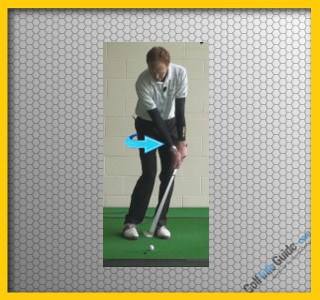
#2 – Hit Down Each and Every Time
One of the biggest mistakes that is made by the average amateur player is trying to hit up on the ball when chipping. It does make some sense, after all, since you want the ball to go up in the air. However, the best way to elevate your chip shots is to hit down through impact, just as you would do on a full iron shot. Whether you are in the rough or sitting on the fairway cut, you still need to hit down through the ball in order to make solid contact. Also, hitting down is going to help you impart backspin on the ball, which is important for controlling the ball when it lands.
While it is true that you want to hit down on all of your chip shots, there needs to be one point made regarding an exception to that point. When hitting a flop shot – which is not technically a chip shot – you are not going to hit down. With a flop shot, you are going to move the club parallel along the top of the ground in order to slice under the ball nicely. Flop shots are high risk and should only be attempted when absolutely necessary. Otherwise, when hitting any kind of basic chip shot, you do want to hit down through impact aggressively.

It is easy to fall into the trap of just chipping off of the fairway when you practice your short game. It is important to practice chipping from clean lies, of course, but it is just as important to practice from a variety of other spots as well. Golf is a tough game in large part because of the many different lies that you can face on the course, so it is up to you to prepare yourself as thoroughly as possible.
When you take some time to practice your chipping, look around the practice green and find as many different kinds of lies as you can. The fairway grass and the rough are two obvious places to start, but you should also be looking for bare lies, sloped lies, and more. This concept applies to the bunker as well, where you shouldn’t give yourself a perfect lie every time during practice. Think about the kinds of lies that have given you trouble in the short game during recent rounds and then do your best to recreate those situations in practice. Over time, you will get better and better and dealing with the difficult lies you are creating, and your short game will be vastly improved as a result.

For a right handed golfer, it is a great idea to practice chipping with only your left hand on the golf club. At impact, you need to have your left wrist in a flat and powerful position, but that isn’t always going to happen when you practice with both hands on the club. By taking away the help of your right hand, your left will be all on its own to move through the hitting area properly. This is going to be quite difficult at first, but you can quickly improve with just a short practice session. Then, when you do put both hands back on the club, the stability that you have gained in your stroke will be noticeable.
To practice chipping with just one hand, take your pitching wedge from the bag and find a clean lie somewhere around the practice chipping green. You want to give yourself an extremely easy chip shot for this drill so you can focus just on the basics of your technique. When you are all set up and aimed at your target, put your right hand in your pocket and use your shoulders to control the motion of the club. As impact approaches, think specifically about keeping the back of your left wrist as flat as possible through the hit. This is going to encourage you to hit down, and it will keep you from ‘flipping’ at impact as well – which is a common mistake made by many amateur players.
If you would like to put backspin on the golf ball when chipping, it is this firm left wrist position that you need to master. Pro golfers are great at keeping that lead wrist steady through impact, as they know that this move will lead to solid contact and plenty of backspin. Hit as many shots as you would like with just your left hand on the end of the club, and put your right hand back once you feel like you have learned the lesson. Even with two hands on the club, however, you are still going to work hard on using your shoulders to control the swing while your lead wrist remains firm into the finish.
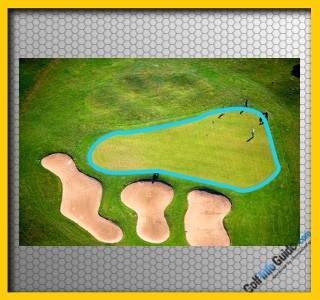
#5 – Get the Ball On the Green
This is a tip that you probably didn’t expect to see on this list. It is an obvious point that you want to get the ball on the green when chipping – yet, surprisingly, this is something that needs to become a bigger priority for many amateur golfers. Countless amateur players, in an effort to chip the ball perfectly on a tough shot, wind up leaving the ball short of the putting surface. When that happens, a second chip shot will follow, and that second shot is often tougher than the first. To avoid compounding your mistakes in this way, always focus on getting your first chip shot somewhere on the putting surface. Even if you can’t get close for an easy save, placing the ball on the green will minimize the damage as you try to complete the hole.
Commonly, missing the green with a chip shot develops through the process below –
Does that process sound familiar? Most likely it does – that is a mistake that nearly every golfer has made at one point or another. Even without making any changes to the technical elements of your chipping game, you can become a better player around the greens simply by dedicating yourself to playing smart rather than trying to pull off a perfect shot.
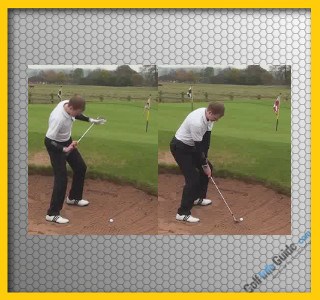
#6 – Use Slopes to Your Advantage
There is more than one way to play any given chip shot. Even a shot that seems simple and straightforward can be played with a variety of clubs, meaning you never have to play a chip shot one specific way. One of the options you have when chipping is to use the slopes of the green to your advantage in order to make the shot as easy as possible. For instance, when chipping uphill, you could choose to use the uphill slope to stop your ball, rather than trying to fall the ball all the way to the hole (where you would attempt to stop it with spin). Or, if there is a backstop behind the hole, you can chip long intentionally and let the ball filter back down to the cup.
Creativity is a big part of the short game, and that is certainly true in this case with regard to the chipping. Don’t just walk right up to your chip shots and swing away without giving the shot a second thought, as you might miss an opportunity to approach the shot in a creative manner. Take a moment or two prior to any chip shot to think about alternative possibilities, and only step in to your stance when you are sure you are taking the best available option.
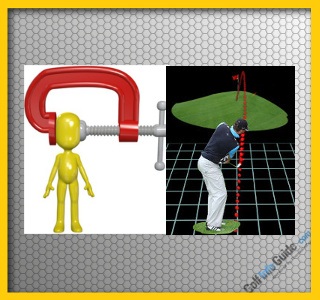
One of the hardest things to replicate in golf practice is the pressure that you will feel on the course. Even if you don’t play in actual competitions, there is still a pressure that all golfers feel to play up to their ability level. It is common for nerves to play a factor in chip shots, so it would be ideal to be able to practice while feeling a bit nervous about your shots. How do you do that? By creating situations that cause you to feel pressure.
A common practice method for building a little bit of pressure is to play a game against one of your friends. Build a chipping practice competition that requires you and a friend to go head to head in a series of chip shot challenges. As the competition moves along, you will naturally become a little nervous as you try to beat out your buddy. There doesn’t even need to be anything on the line – simply needing to hit good shots to win the competition will be enough to cause the nerves to kick in. After practicing in this manner for a period of time, you should start to notice that your chip shots on the course are a little bit easier to handle.

#8 – Take the Flag Out When Speed is Controlled
The matter of whether or not you should take out the flag when chipping is a debate that has been raging for years in the golf world. Usually, golfers will be firmly on one side of this argument or the other – either they will say that you should always take the flag out, or they will say it should always be left in. So who is right? Neither. In reality, your decision on what to do with the flag should depend on the situation at hand.
When you are sure that you are going to be able to control the speed of your chip shot, you should take the flag out. The flag being present in the hole is only going to hurt you when the ball is rolling at a gentle speed, so take it out and give yourself a chance to let the ball fall in. Chipping uphill is a good example of a time when you should have the speed of the ball under control, but you could even apply this logic on a flat shot where you have a good lie and plenty of green to work with.
The main situation that is going to call for the flag to be left in is when you are chipping down a steep slope. In that case, especially when you are coming out of the rough, the ball will be less controlled and there is a good chance it will be moving quickly around the cup. Since the ball is likely to be rolling fast, you want to leave the flag in just in case you can use the pin to stop the shot cold. The ball that is zooming across the green isn’t going to fall in with the pin pulled out anyway, so you might as well leave it in.
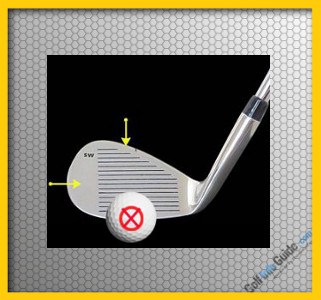
Many golf teachers will tell you that you should learn how to chip with a variety of clubs so you can deal with plenty of different circumstances around the course. There is nothing wrong with that strategy, but it should only be employed after you have mastered the use of one specific club. You want to have one ‘go-to’ club that you can use to deal with most of your chip shots, so take time to develop a strong relationship with one wedge before you expand your horizons.
There are a couple of options for which club you can use as your go-to option – either your sand wedge, or your lob wedge. The other wedges in your bag simply don’t have enough loft to handle a variety of shots, so you should learn to hit all of your chips first with one of the two most-lofted clubs in your bag. Also, it takes skill to chip well with a lofted wedge, so you are going to have to work hard on developing your talent in this part of the game. If you take the easy way out and only ever learn to chip by bumping an eight iron, you will never develop the touch needed to hit harder shots.
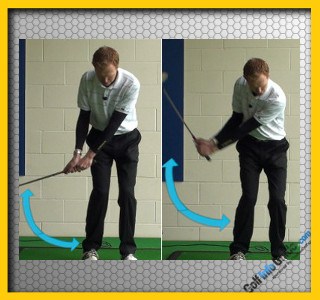
This last tip is one that gets tossed around a lot in relation to the full swing, but it is actually far more important when it comes to the short game. When chipping, you need to keep your head down nicely through the swing in order to make solid contact time after time. If you let your head move prematurely as you swing forward, your entire upper body will move and your chances of hitting the ball cleanly will decrease dramatically. While there are certainly other fundamentals that are important within your chipping technique, the simple act of keeping your head down is going to go a long way toward producing nice results.
The habit of looking up prior to actually hitting the ball comes from just one place – the desire to see where the ball is going. Countless golfers can’t wait to see where the ball is going to go, so they look up early out of anticipation. Of course, this is a self-defeating move, as the act of looking up is likely to cause the ball to go somewhere you didn’t want it to go in the first place. Do yourself a favor and work on being more patient while chipping – keep your eyes down, keep your head steady, and trust that the ball is going to go in the right direction. Most likely, as long as you keep your head down, you will love what you see when you do finally look up to watch the ball.
There are plenty of ways in which you can improve your golf game, but few will have as much of an impact as sharpening your chipping performance. When you chip at a high level, you will find that you give yourself plenty of easy par-saving putts throughout any given round. Chipping is the tool that can keep your round on track, even if it isn’t quite as exciting as hitting a long drive or an accurate iron shot. Don’t make the mistake of overlooking chipping any longer – focus on this part of your game and look forward to lower scores following closely behind.






